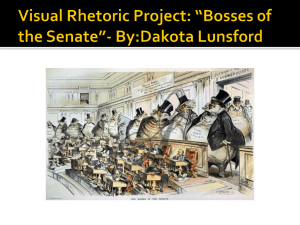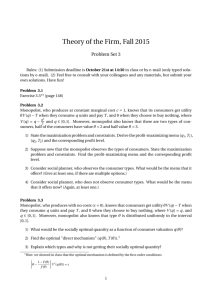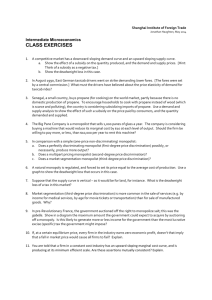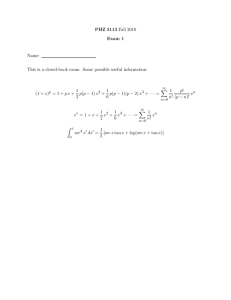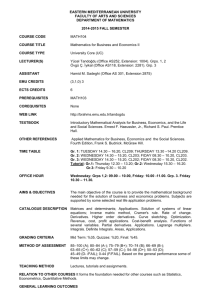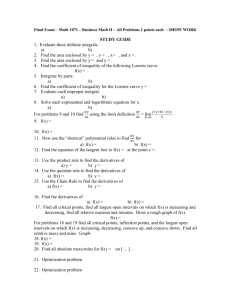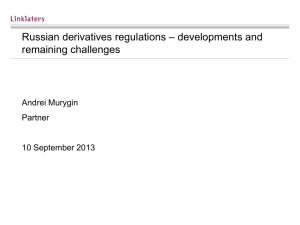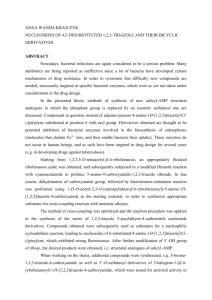E319
advertisement
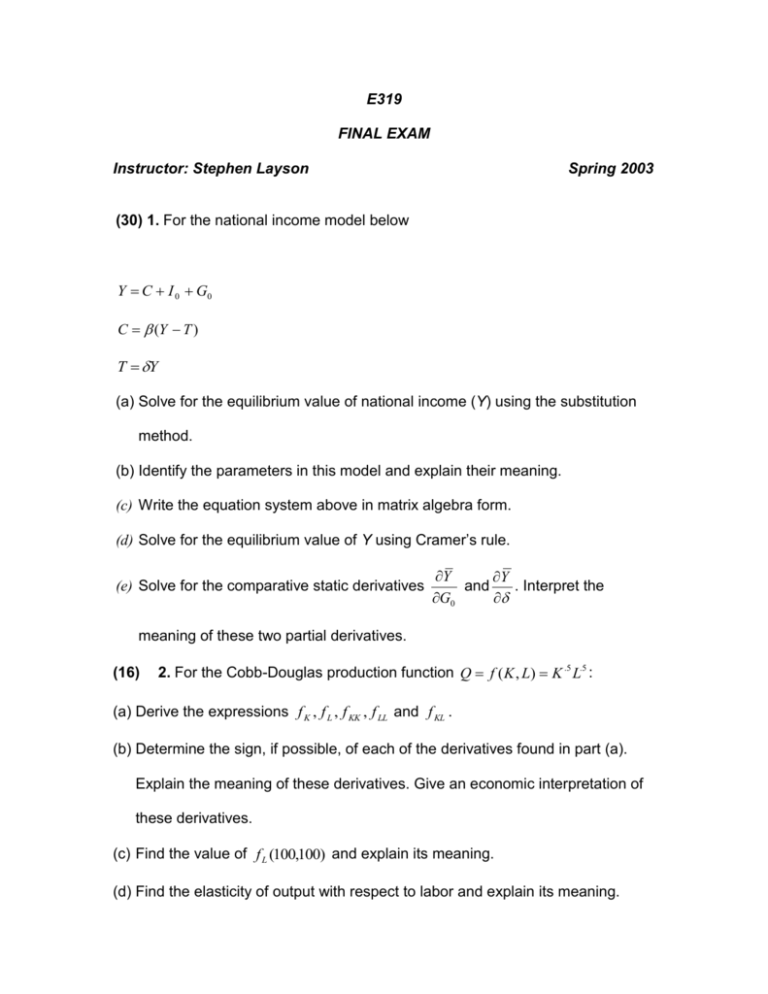
E319 FINAL EXAM Instructor: Stephen Layson Spring 2003 (30) 1. For the national income model below Y C I 0 G0 C (Y T ) T Y (a) Solve for the equilibrium value of national income (Y) using the substitution method. (b) Identify the parameters in this model and explain their meaning. (c) Write the equation system above in matrix algebra form. (d) Solve for the equilibrium value of Y using Cramer’s rule. (e) Solve for the comparative static derivatives Y Y and . Interpret the G0 meaning of these two partial derivatives. (16) 2. For the Cobb-Douglas production function Q f ( K , L) K .5 L.5 : (a) Derive the expressions f K , f L , f KK , f LL and f KL . (b) Determine the sign, if possible, of each of the derivatives found in part (a). Explain the meaning of these derivatives. Give an economic interpretation of these derivatives. (c) Find the value of f L (100,100) and explain its meaning. (d) Find the elasticity of output with respect to labor and explain its meaning. (20) 3. Given the production function in problem 2: (a) Write out the Lagrange function if you want to minimize the cost of producing 100 units of output given a wage rate of $1 and a rental rate of capital of $4. (b) Solve for the optimal values of labor and capital for the Lagrange function in part (a). (c) How do you know that the answer found in part (b) minimizes cost? (d) Solve for the optimal value of the Lagrange multiplier and explain its meaning. (10) 4. Given the aggregate production function Q f (t , K , L) and the functions K g (t ) and L h(t ) . (a) Write out the total differential of Q. (b) Write out the total derivative of Q with respect to t. (c) Draw the channel map for this problem. (d) Identify the direct and indirect effects of t on Q. (16) 5. A two-product monopolist has a cost function given by C 2Q12 Q1Q2 Q22 . The monopolist can sell as many units of product 1 as she wants at $135 each. The monopolist can sell as many units of product 2 as she wants at $80 each. The monopolist desires to make as much profit as possible. (a) Write out the objective function for this problem. (b) Write out the first order conditions and solve for the optimal outputs of products 1 and 2 using Cramer’s rule. Is there only one solution that satisfies the first-order conditions? Explain. (c) Verify that the second order conditions are satisfied. (d) Solve for the optimal value of profit. (4) 6. If population grows according to the function P P0 e r1t and consumption grows according to the function C C 0 e r2t , find the rates of growth of population, of consumption, and of consumption per capita. (4) 7. Write an exponential expression for the value: (a) $100, compounded continuously at the interest rate of 5% for 5 years. (b) $100, received 10 years from today when the continuously compounded interest rate is 5%. EXTRA CREDIT! (5) 8. Given the inverse demand function p f (q ) where f (q ) 0 for all q, show that marginal revenue can be upward sloping. What is the necessary condition for marginal revenue to be upward sloping?



